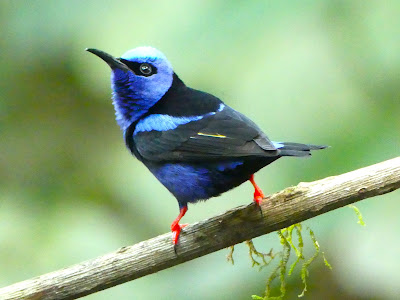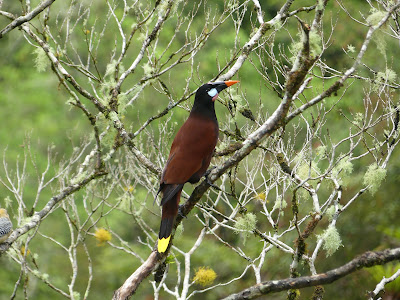A monitoring afternoon at the scrape for birds marked for our colour ringing projects. This was the second try for Lapwings ringed as chicks that may have returned to their natal site to breed. The North Norfolk Lapwing project started in 2022 when 4 chicks were found at this site, and marked with a red project marker and blue individually coded rings. Typically birds with attempt to breed in the second season after hatching and the current survival rate for Lapwings in their first year is believed to be around 0.595 (known from data previously collected across the UK via ringing studies). Our project is designed to collect further information about chick survivability, as the UK population is in decline, and an increasing mortality rate is suspected. Lapwing are status red in the birds of conservation concern list.
The use of colour rings allows records of the bird without the need for it to be captured and also encourages public engagement as field observations can be submitted by anyone who sees and records the individual ring code with location and date information.
The water level is still very high and the prospective breeders are in the process of finding suitable nesting sites. It looks as though there will be increased numbers of Black-headed Gulls as there are many birds present and as water levels drop they are likely to complete with the Lapwing, Oystercatcher, Greylag and Redshank for places to nest. Little Ringed Plover have nested in the past but were not in evidence on our visit.
We managed to find 01 in a grassy area to the right of the scrape from the viewing hide. From the behaviour observed, this bird is probably female, keeping away from the gulls on the ground and flying in support of another Lapwing, tenacious in its efforts to drive away gulls that came too close.
Lapwing 01 ringed 25th May 2022
Statistically, there could be other returners so we will continue to monitor for other birds with colour rings.
We also saw that Black-headed gull 2C23 was one of the birds loafing about the scrape. This bird has a history of sightings that shows both summering the wintering locations, demonstrating the sight faithful nature of the bird.
2C23 sightings
Ringed on 22/06/2022 as adult Black-headed
Gull (EA88135) Little
Snoring garden, Norfolk
Encountered on 07/10/2022 Black-headed Gull (EA88135) Weymouth beach, Dorset
Encountered on 03/11/2022 Black-headed Gull (EA88135) Radipole Lake, Dorset
Encountered on 09/11/2022 Black-headed Gull (EA88135) Radipole Lake, Dorset
Encountered on 11/11/2022 Black-headed Gull (EA88135) Radipole Lake, Dorset
Encountered on 27/11/2022 Black-headed Gull (EA88135) Radipole Lake, Dorset
Encountered on 07/12/2022 Black-headed Gull (EA88135) Ferrybridge, Dorset
Encountered on 08/01/2023 Black-headed Gull (EA88135) Radipole Lake, Dorset
Encountered on 06/07/2023 Black-headed Gull (EA88135) Sculthorpe Moor, Norfolk
Encountered on 28/09/2023 Black-headed Gull (EA88135) Radipole Lake, Dorset
Encountered on 04/11/2023 Black-headed Gull (EA88135) Radipole Lake, Dorset
Encountered on 13/12/2023 Black-headed Gull (EA88135) Radipole Lake, Dorset
Encountered on 24/01/2024 Black-headed Gull (EA88135) Radipole Lake, Dorset
Last encountered on 24/03/2024 Black-headed Gull (EA88135) Sculthorpe Moor, Norfolk
2C23 Radipole Lake, 13/12/2023








































